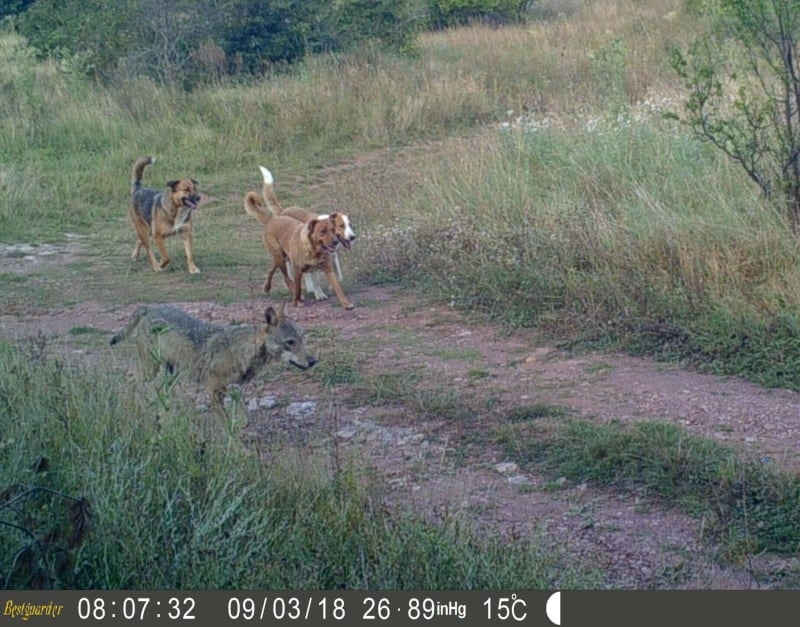A dog’s life: Bulgarian researchers observe a gray wolf living among feral dogs
Researchers from Sofia University in Bulgaria recently encountered an unusual sight – a group of ten, presumably feral dogs, accompanied by a wolf. As far as is known, it is the first documented observation of this kind, opening an entirely new dimension to the discussion surrounding the gray wolf’s conservation status in Europe.
By Elitsa Popova
Since wolves and domestic dogs are closely related, they can interbreed and produce fertile offspring – so-called “wolf-dog hybrids”. Hybridisation happens naturally in the wild when there is a high presence of unrestrained dogs. An additional contributing factor is a strong hunting pressure on wolves, leading to the breakdown of packs.
Both of these factors are present in the Osogovo Mountain area, along the border between Bulgaria and North Macedonia, where a group of researchers from Sofia University made an interesting observation. Over a period of two months, camera traps, installed by the researchers and their collaborators from Border Police, recorded a group of ten feral dogs, accompanied by what appears to be a gray wolf. Its behaviour as well as some atypical colour patterns and body proportions, however, suggest that the individual might not be a pure gray wolf, but rather a hybrid. To confirm this hypothesis the researchers are now planning to collect samples for a DNA analysis.

“There are two possible explanations for the origin of the wolf-like individual: either it was born in a wolf pack and joined the feral dogs later, or it was born in the feral dog group. Many studies report that hybridization in wolf-dog crosses is asymmetrical, that means most cases involve breeding between a male dog and a female wolf. So the first option seems more plausible”, explains Elitsa Popova, leading author of the study, which was recently published in the journal Mammalia.
“The typical behaviour of wolves toward dogs is aggressive, but in cases where the wolf is in a state of social isolation, it could become playful or even submissive to dogs. This is what we believe happened in our case, because the wolf is a young individual and limping, which makes hunting for prey difficult”, she adds.
In recent decades, wolf-dog hybridisation has become more common in Europe. According to the researchers, this causes concern regarding the genetic purity and adaptation of the wolf population, and may also affect the public perception of wolves as well as their conservation status. Further research is therefore critical to learn more about the behaviour and the ecological impact of the hybrids.
Read the original article here:
You are currently viewing a placeholder content from YouTube. To access the actual content, click the button below. Please note that doing so will share data with third-party providers.